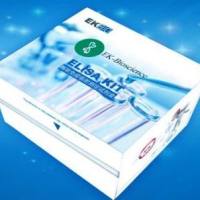Characterization of Dopamine Receptors
互联网
- Abstract
- Table of Contents
- Materials
- Figures
- Literature Cited
Abstract
Dopamine receptors are the principal targets of drugs used for the treatment of neuropsychiatric disorders such as schizophrenia and Parkinson's disease. This unit details protocols for radioligand binding assays for various subtypes of dopamine receptor. The scope is limited primarily to the most widely used, well established protocols for binding assays, which employ commercially available tritiated ligands. Protocols are given for radioligand binding assays for D1?like and D2?like receptors. A protocol for the putatively selective labeling of D3 sites is also presented. The basic protocols are used to assay dopamine receptors in membrane homogenates, and support protocols describe the preparation of these homogenates from organs and from cultured cells. The calculation of the radioligand's molar concentration is also included.
Keywords: Receptor binding; dopamine; D1; D2; D3; D4; D5; radioligand binding
Table of Contents
- Basic Protocol 1: Binding Assay for D1/D5 Receptors
- Basic Protocol 2: Binding Assay for D2/D3/D4 Receptors
- Basic Protocol 3: Binding Assay for Putative D3 Receptors
- Support Protocol 1: Membrane Preparation from Tissue
- Support Protocol 2: Membrane Preparation from Cultured Cells
- Support Protocol 3: Calculation of Radioligand Concentration
- Reagents and Solutions
- Commentary
- Literature Cited
- Figures
- Tables
Materials
Basic Protocol 1: Binding Assay for D1/D5 Receptors
Materials
Basic Protocol 2: Binding Assay for D2/D3/D4 Receptors
Materials
Basic Protocol 3: Binding Assay for Putative D3 Receptors
Materials
Support Protocol 1: Membrane Preparation from Tissue
Materials
Support Protocol 2: Membrane Preparation from Cultured Cells
Materials
|
Figures
-
Figure 1.6.1 Representative saturation analysis of [3 H]SCH 23390 binding in striatal membranes. Binding parameters for the radioligand are: K d = 0.27 nM and B max = 835 fmol/mg protein. B/F, bound/free ligand. View Image -
Figure 1.6.2 Representative saturation analysis of [3 H]spiperone binding in striatal membranes. Binding parameters for the radioligand are: K d = 0.14 nM and B max = 440 fmol/mg protein. B/F, bound/free ligand. View Image -
Figure 1.6.3 Representative saturation analysis of [3 H]PD 128907 binding in striatal membranes. Binding parameters for the radioligand are: K d = 0.36 nM and B max = 25 fmol/mg protein. B/F, bound/free ligand. View Image
Videos
Literature Cited
| Akunne, H.C., Towers, P., Ellis, G.J., Dijkstra, D., Wikstrom, H., Heffner, T.G., Wise, L.D., and Pugsley, T.A. 1995. Characterization of binding of [3H]PD 128907, a selective dopamine D3 receptor agonist ligand, to CHO‐K1 cells. Life Sci. 57:1401‐1410. | |
| Bancroft, G.N., Morgan, K.A., Flietstra, R.J., and Levant, B. 1998. Binding of [3H]PD 128907, a putatively selective ligand for the D3 dopamine receptor, in rat brain: A receptor‐binding and quantitative autoradiographic study. Neuropsychopharmacology. | |
| Billard, W., Ruperto, V., Crosby, G., Iorio, L.C., and Barnett, A. 1984. Characterization of the binding of 3H‐SCH 23390, a selective D‐1 receptor antagonist ligand, in rat striatum. Life Sci. 35:1885‐1893. | |
| Briere, R., Diop, L., Gottberg, E., Grondin, L., and Reader, T.E. 1987. Stereospecific binding of a new benzazepine, [3H]SCH23390, in cortex and neostriatum. Can. J. Physiol. Pharmacol. 65:1507‐1511. | |
| Burris, K.D., Filtz, T.M., Chumpradit, S., Kung, M.P., Foulon, C., Hensler, J.G., Kung, H.F., and Molinoff, P.B. 1994. Characterization of [125I] (R)‐trans‐7‐hydroxy‐2‐[N‐propyl‐N‐(3‐iodo‐2′‐propenyl)amino]tetralin binding to dopamine D3 receptors in rat olfactory tubercle. J. Pharmacol. Exp. Ther. 268:935‐942. | |
| Castro, S.W. and Strange, P.G. 1993. Coupling of D2 and D3 dopamine receptors to G‐proteins. FEBS Lett. 315:223‐226. | |
| Chio, C.L., Lajiness, M.E., and Huff, R.M. 1994. Activation of heterologously expressed D3 dopamine receptors: Comparison with D2 dopamine receptors. Mol. Pharmacol. 45:51‐60. | |
| Grigoriadis, D.E. and Seeman, P. 1985. Complete conversion of brain D2 dopamine receptors from the high‐ to low‐affinity state for dopamine agonists using sodium ions and guanine nucleotides. J. Neurochem. 44:1925‐1935. | |
| Howlett, D.R., Morris, H., and Nahorski, S.R. 1979. Anomalous properties of [3H]‐spiperone binding sites in various areas of the rat limbic system. Mol. Pharmacol. 15:506‐514. | |
| Kilpatrick, G.J., Jenner, P., and Marsden, C.D. 1986. [3H]SCH 23390 identifies D‐1 binding sites in rat striatum and other brain areas. J. Pharm. Pharmacol. 38:907‐912. | |
| Levant, B. 1996. Distribution of dopamine receptor subtypes in the CNS. In CNS Neurotransmitters and Neuromodulators: Dopamine (T.E. Stone, ed.) pp.77‐87. CRC Press, Boca Raton, Fla. | |
| Levant, B., Grigoriadis, D.E., and De Souza, E.B. 1992. Characterization of [3H]quinpirole binding to D2‐like dopamine receptors in rat brain. J. Pharmacol. Exp. Ther. 262:929‐935. | |
| Levesque, D., Diaz, J., Pilon, C., Martres, M.P., Giros, B., Souil, E., Schott, D., Morgat, J.L., Schwartz, J.C., and Sokoloff, P. 1992. Identification, characterization, and localization of the dopamine D3 receptor in rat brain using 7‐[3H]hydroxy‐N,N‐di‐n‐propyl‐2‐aminotetralin. Proc. Natl. Acad. Sci. U.S.A. 89:8155‐8159. | |
| MacKenzie, R.G., VanLeeuwen, D., Pugsley, T.A., Shih, Y.H., Demattos, S., Tang, L., Todd, R.D., and O'Malley, K.L. 1994. Characterization of the human dopamine D3 receptor expressed in transfected cell lines. Eur. J. Pharmacol. 266:79‐85. | |
| Moreland, R.B., Patel. M., Hseih, G.C., Wetter, J.M., Marsh, K., Brioni, J.D. 2005. A‐412997 is a selective dopamine D4 receptor agonist in rats. Pharmacol. Biochem. Behav. 82:140‐147. | |
| Nakane, M., Cowart, M.D., Hseih, G.C., Miller, L., Uchhic, M.E., Change, R., Terranova, M.A., Donnelly‐Roberts, D.L., Namovic, M.T., Miller, T.R., Wetter, J.M., March, K., Stewart, A.O., Bioni, J.D., Moreland, R.B. 2005. 2‐[4‐(3,4‐Dimethylphenyl)piperazin‐1‐ylmethyl]‐1H benzoimidazole (A‐381393), a selective dopamine D4 receptor antagonist. Neuropharmacology 49:112‐21. | |
| Remington, G. and Kapur, S. 2001. SB‐277011 GlaxoSmithKline. Curr. Opin. Investig. Drugs 2946‐2949. | |
| Richfield, E.K., Penney, J.B., and Young, A.B. 1989. Anatomical and affinity state comparisons between dopamine D1 and D2 receptors in the rat central nervous system. Neuroscience 30:767‐777. | |
| Seeman, P. 1993. Receptor Tables. Vol. 2: Drug Dissociation Constants for Neuroreceptors and Transporters. SZ Research, Toronto. | |
| Seeman, P. and Grigoriadis, D.E. 1987. Dopamine receptors in brain and periphery. Neurochem. Int. 10:1‐25. | |
| Sibley, D.R. and Creese, I. 1983. Regulation of ligand binding to pituitary D‐2 dopaminergic receptors. J. Biol. Chem. 258:4957‐4965. | |
| Sokoloff, P., Giros, B., Martres, M.P., Bouthenet, M.L., and Schwartz, J.C. 1990. Molecular cloning and characterization of a novel dopamine receptor (D3) as a target for neuroleptics. Nature 347:146‐151. | |
| Sunahara, R.K., Guan, H.‐C., O'Dowd, B.F., Seeman, P., Laurier, L.G., Ng, G., George, S.R., Torchia, J., Van Tol, H.H.M., and Niznik, H.B. 1991. Cloning of the gene for a human D5 receptor with higher affinity for dopamine than D1. Nature 350:614‐619. | |
| Van Tol, H.M.M., Bunzow, J.R., Guan, H.‐C., Sunahara, R.K., Seeman, P., Niznik, H.B., and Civelli, O. 1991. Cloning the gene for a human dopamine D4 receptor with high affinity for the antipsychotic clozapine. Nature 350:610‐614. | |
| Key References | |
| Bylund, D.B. and Yamamura, H.I. 1990. Methods for receptor binding. In Methods in Neurotransmitter Receptor Analysis (H.I. Yamamura, S.J. Enna, and M.J. Kuhar, eds.) pp. 1‐35. Raven Press, New York, N.Y. | |
| Provides detailed instructions for the analysis of a variety of receptor binding experiments. | |
| Seeman, 1993. See above. | |
| Provides encyclopedic summary of literature Kd and Ki values for dopaminergic and other receptors, as well as an extensive reference list. |







